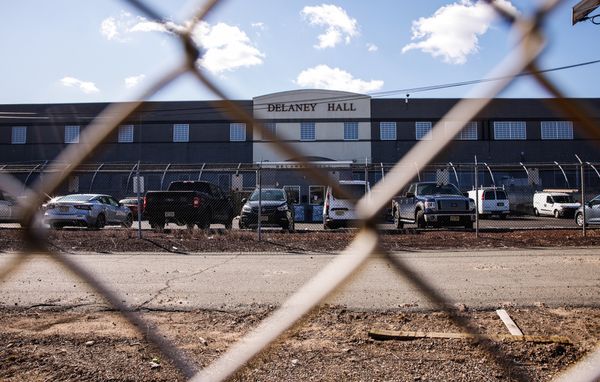As Russia's invasion of Ukraine continues to roil global markets here's a look at several “stocks of the week” TheStreet.com and Real Money experts are tracking.
Cresud $8.99. 5-day performance 35.31%.
Shares of Argentine farming and land name Cresud (CRESY) have been on a tear in recent days and weeks notes Real Money's Jonathan Heller.
“The company's recent earnings release certainly helped, but in addition, markets may be re-valuing some of the potentially cheaper agriculture names, as war rages on in Ukraine,” Heller wrote recently. “Recent volume has been higher too; Thursday's was about four times the daily average."
For investors familiar with CRESY, it owns an interesting array of assets, albeit in a risky, and inflationary part of the world. The company manages (owns and leases) a portfolio of 880,000 hectares (the equivalent of 2.17 million acres, or 3,400 square miles, larger than Delaware and Rhode Island combined) in Argentina (71%), Brazil (20%), Paraguay (8%) and Bolivia (1%).
About 650,000 acres are farmland (60% owned) where it grows soybeans, corn, sugarcanes, and other crops. There's an additional 418,000 acres (88% owned) devoted to livestock. The remaining acreage, about 1.1 million, is "reserve", and "potential productive" land.
“CRESY owns large stakes in two publicly traded companies -- 39.4% of regional (Brazil, Bolivia, and Paraguay) farmland company BrasilAgro (LND), a $675 million market cap company, and 53.7% of diversified real estate company IRSA, which has a $310 million market cap,” Heller said. “IRS owns an array of shopping malls (15), office buildings (7) and hotels (3), and other development projects, as well as a 30% stake in Argentine bank Banco Hipotecario (which trades on the Buenos Aires exchange). CRESY does carry considerable debt of about $400 million (net of cash), but that is down from $437 million in 2019.”
Typically, the company doesn’t garner a great deal of coverage, but for Heller, leaning into CRESY has been a rewarding foray into a risky world.
“The first time I owned CRESY several years ago, I wanted it to be a long-term buy and hold, but it hasn’t fit that mold,” he said. “Headquartered in a country where political influence and government control hampers free markets, and inflation runs rampant, it is naturally going to trade at a discount in U.S. markets.”
“Can you imagine the potential value of a US based company, owning that much U.S. farmland?”
CRESY has experienced an interesting stock history. “The stock traded above $21 in 2018, and by the onset of the pandemic was trading in the mid-$2 range. On Thursday it closed at $7.31,” Heller said.
“Welcome to the wild west of investing, not for those with a weak stomach,” he added.
Huntington Ingalls $220.07. 5-day performance 9.10%.
What defense industry stocks pass muster right now? Real Money'’s Bob Ciura has several ideas.
“During tumultuous times in the stock market, whether it be attributable to economic stress, interest rates or geopolitical risks, certain asset classes tend to outperform others,” Ciura said. “They tend to be defensive in nature if the tumult is caused by economic concerns, where utilities may outperform, for instance.”
According to Ciura, the situation in Ukraine has caused a different kind of risk. “That’s a geopolitical environment where nations all over the world are growing more concerned about their ability to defend themselves and others,” he said.
“First up is Huntington Ingalls Industries (HII), a company that designs, builds, refurbishes, and repairs military ships in the U.S. Huntington Ingalls was founded in 1886, generates almost $11 billion in annual revenue, and trades for a market capitalization of $8.2 billion.
“Huntington designs and builds non-nuclear ships including amphibious assault ships, surface combat ships, aircraft carriers, Coast Guard ships, and more,” Ciura said. “It also builds nuclear-powered aircraft carriers, submarines, and support ships. Huntington also has a sizable refurbishing business where it overhauls existing ships and makes them fit for service, extending their lifecycle.”
Huntington Ingalls is less diversified than the larger defense companies because it focuses solely on naval equipment.
“That means its potential market is smaller, but given most of the world's countries have some sort of sea coast, its ability to generate additional revenue from conflicts such as Ukraine is still strong,” Ciura noted. “In addition, for those countries that do need to arm themselves for naval warfare, Huntington is a well-respected name with a very long history of delivering great products.”
The stock is yielding 2.3% right now, which makes it about 100 basis points ahead of the S&P 500. Huntington Ingalls also has a very low payout ratio of just 36%.
“That means that the company's dividend is quite safe, and has plenty of room for further increases,” Ciura said.
General Dynamics $245.30. 5-day performance 7.59%.
Next up is General Dynamics (GD), a defense and aerospace company that operates worldwide. The company has a diverse slate of defense products that includes submarines, auxiliary ships, tankers, cargo ships, wheeled and tracked vehicles, various weapons systems, and even business jets.
“We like General Dynamics' ability to sell a wide variety of products and services to a wide variety of customers,” Ciura said. “That diversification helps the company attract incremental revenue during crises by being able to provide products for just about any customer's situation.”
General Dynamics raised its dividend in March of 2022, adding 6% to make 31 consecutive years of increases. In addition, it now yields 2.2%, similar to the other names on this list.
“The payout ratio is expected to be just over 40% for this year, so General Dynamics' dividend should be quite safe,” Ciura added. “Finally, we see 6% annual earnings-per-share growth in the coming years, providing the company the cash it needs to continue to boost the payout.”
Salesforce $203.01. 5-day performance (-)2.44%.
The Dow Jones US Software Index is down 14.3% year to date, but Salesforce (CRM) in particular, is down 17.8% in 2022.
“Salesforce recently released the firm's fourth quarter financial results,” said Real Money's Stephen Guilfoyle. “The firm posted adjusted EPS of $0.84, which beat decisively expectations, on revenue generation of $7.33B. The revenue print also beat Wall Street, and was good for annual growth of 25.8%.”
Beyond the headlines, Current Remaining Performance Obligations, or CRPO, (i.e., future revenue under contract expected to be recognized within 12 months) stands at $22B, up 22% year over year. More broadly, Performance Remaining Obligation, which counts future revenue under contract without the one-year timeline, increased 21% to $43.7B.
“The numbers within the numbers also impressed,” Guilfoyle added. “Adjusted operating margin landed at 15%, above expectations, while operating cash flow of $1.98B, despite being down from a year ago, handily beat what Wall Street had in mind.”
Salesforce reports two main business segments:
Subscription and Support... which grew revenue 24.7% to $6.828B
Professional Services and Other... which grew revenue 46% to $498M.
The firm then breaks down the Subscription and Support segment into various clouds whose sales performance is then broken out for us:
Sales Cloud.... revenue increased 17% to $1.586B
Service Cloud... revenue increased 18% to $1.71B
Platform & Other (includes Slack)... revenue increased 53% to $1.35B.
Marketing & Commerce... increased revenue 20% to $1.046B
Data ... increased revenue 23% to $1.136B.
Salesforce increased FY 2023 revenue guidance to $32B to $32.1B from $31.7B to $31.8B. Wall Street had been at $31.8B on this metric. The firm sees full year adjusted EPS at $4.62 to $4.64. For the current quarter, Salesforce expects to earn an adjusted $0.93 to $0.94 per share on revenue of $7.37B to $7.38B. The firm had previously guided the quarterly revenue number toward $7.215B to $7.25B. Wall Street had been looking for adjusted EPS of $0.99 on revenue of $7.26B.
Beyond those numbers, the firm sees full year operating margin printing at a GAAP 3.6% or an adjusted 20%, as well as operating cash flow that increases 21% to 22%. For the quarter, the firm expects CRPO to grow 21%.
“The guidance is between solid and very good in my opinion,” Guilfoyle noted. “While investors are being asked to put up with some GAAP margin pressure as the firm digests its many recent acquisitions, there appears to be no corporate doubt about the firm's ability to grow sales in this environment.”
“Also, an FYI - Salesforce does little to no business in Russia or Ukraine,” he added.
Guilfoyle says There are nine Wall Street analysts with either "buy" or "buy equivalent" ratings, and there are three 'hold" or "hold equivalent" ratings. “One of the holds, Scott Berg of Needham, did not set a price target,” he said. “The average target price of the other 11 analysts was $296.09, with a high of $360 (Kash Rangan of Goldman Sachs) and a low of $225 (Karl Keirstead of UBS).”
Guilfoyle, who is long CRM, said the stock bottomed last Thursday (March 3rd) and has quickly reversed (at least for now) its downward trend which has been in place since early November.
Here’s how he’s playing Salesforce right now.
Salesforce
- Target Price: $271 (for now, I do want all three gaps)
- Pivot: $226 (50-day SMA)
- Panic: $182 ( a break of last week's low)







